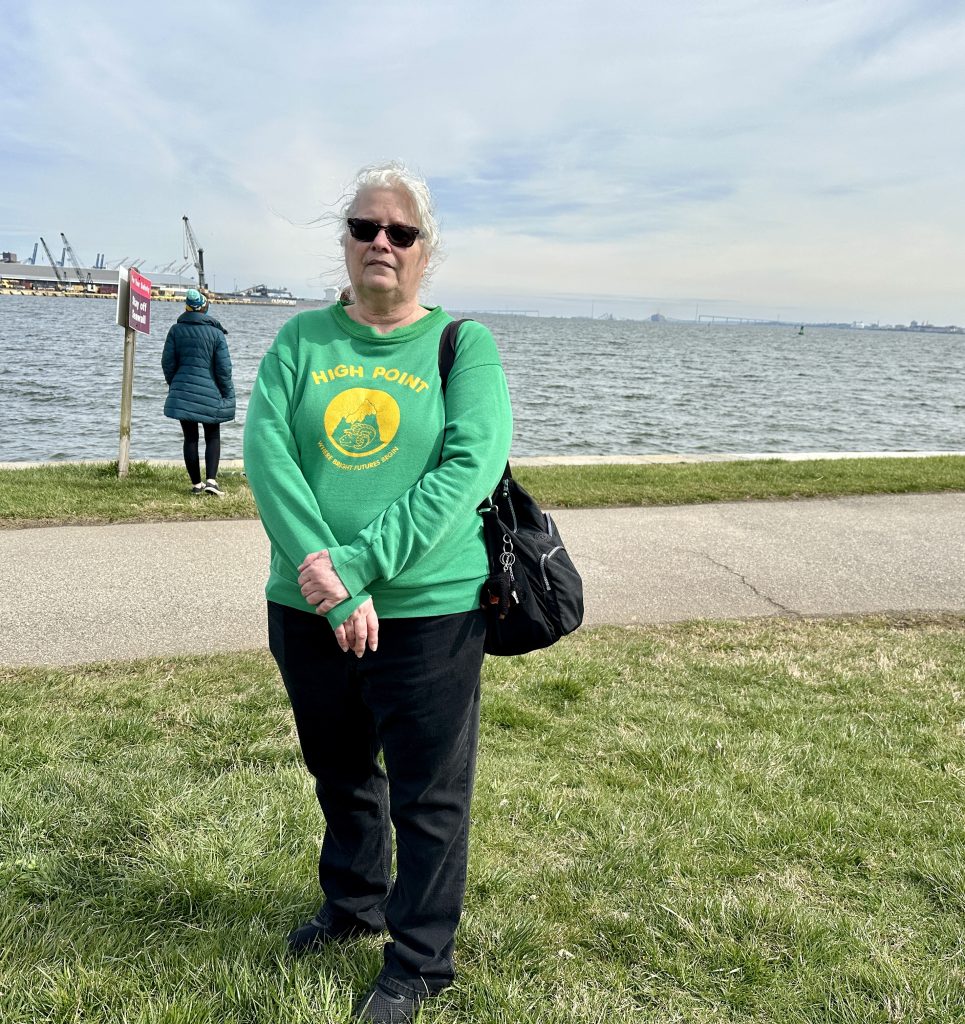Baltimore mourns a city symbol after the Key Bridge falls
By SAPNA BANSIL
BALTIMORE, Md. – When Julie Rewers walked a few yards from her home in suburban Baltimore, she used to see the Francis Scott Key Bridge, its sprawling arch stretched majestically across the Patapsco River.
The bridge was so ingrained in the community where the 28-year-old was born and raised that local businesses used it in their logos. It took Rewers to vacations in Ocean City and formed the backdrop of boating excursions with friends. When she commuted from an old job, the bridge signified that she was almost home.
“We’re a water town,” Rewers said. “We’re a port city. Things like [the bridge] are just icons in this area.”
After the bridge collapsed early Tuesday morning, locals grieved the construction workers who were presumed dead and conveyed gratitude to first responders. They also mourned the bridge itself, expressing shock that a fixture of Baltimore’s landscape for 47 years vanished so suddenly into a pile of steel debris.
It was a marvel of infrastructure, but for neighborhoods on either side of the bridge, it was more than that. It was a daily reminder of its role in the nation’s birth, marking the approximate location where Francis Scott Key observed a British bombardment that later inspired the national anthem. It took them to work and the beach, but also to the past.

As a 67-year-old who has lived in the Brooklyn neighborhood her whole life, Mary Catherine Youngbar saw the bridge as a symbol of patriotism and a monument to history.
Standing at Fort McHenry with her older sister this week, she remembered when it was constructed and how it was hailed as the final link of the Baltimore Beltway. She recalled being in tears when she learned the bridge had collapsed.
“That’s a piece of history we’ll never get back,” Youngbar said.
Like Youngbar, others also brought their grief to Fort McHenry, lining the tip of a peninsula four miles from the wreckage site. Parents pushed their kids in strollers, attempting to explain the gaping hole in the horizon. Bikers and joggers stopped to snap photos through an early spring haze. One biker who said the bridge was a landmark on his regular riding route shared a camera roll filled with bridge selfies.
Among those who stood at the seawall staring at a scene of broken steel was Michael Thornton, a 51-year-old sales manager who grew up in South Baltimore. The bridge, which opened when Thornton was four years old, was a mainstay of his upbringing.
“For Baltimoreans it’s an important part of not only getting from one point to another, but it’s kind of an iconic bridge,” he added. “Everybody knows that bridge. If you come to the harbor, you’ve seen that bridge. If you come to the fort, you’ve seen that bridge. If you spent any time on the water, you’ve been under that bridge.”
Hours after Thornton woke up to the news that the bridge had collapsed, he felt compelled to view the damage for himself, even as he struggled to comprehend it.
“Looking out there and not seeing the bridge is so foreign to me,” Thornton said. “It’s just bizarre that there’s not a bridge there.”
Rewers, meanwhile, learned that a container ship had struck the bridge shortly after it happened. Throughout the night, she followed the coverage on television, monitored the helicopters humming overhead and shared her sadness on Facebook.
“There’s emotional, nostalgic aspects of it,” Rewers said in a phone call. “That’s something we consider part of our home that’s gone.”
In one of her posts, Rewers asked, “but why do I feel emotionally attached to a bridge?” followed by a crying emoji. By Wednesday afternoon, the message had been shared over 850 times.
“It’s something that’s very important to us,” Rewers said of the bridge. “It’s something that was tragically and suddenly gone … and now we have to deal with the cleanup and the recovery – and the mental recovery.”

Capital News Service is a student-powered news organization run by the University of Maryland Philip Merrill College of Journalism. With bureaus in Annapolis and Washington run by professional journalists with decades of experience, they deliver news in multiple formats via partner news organizations and a destination Website.

